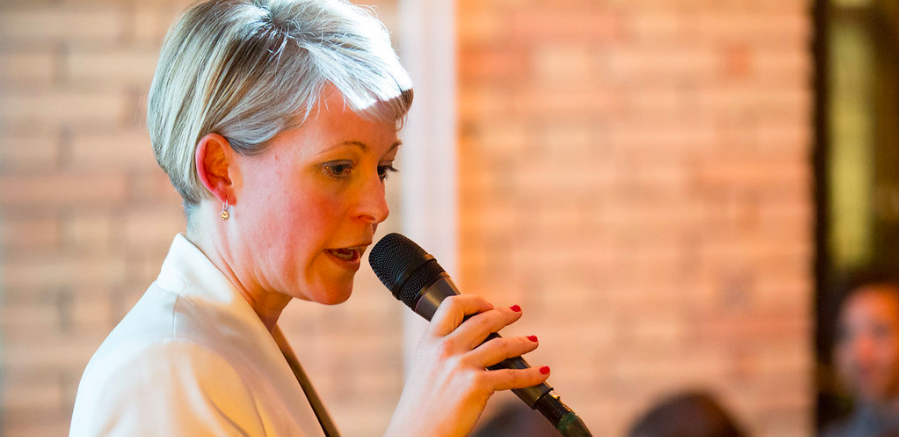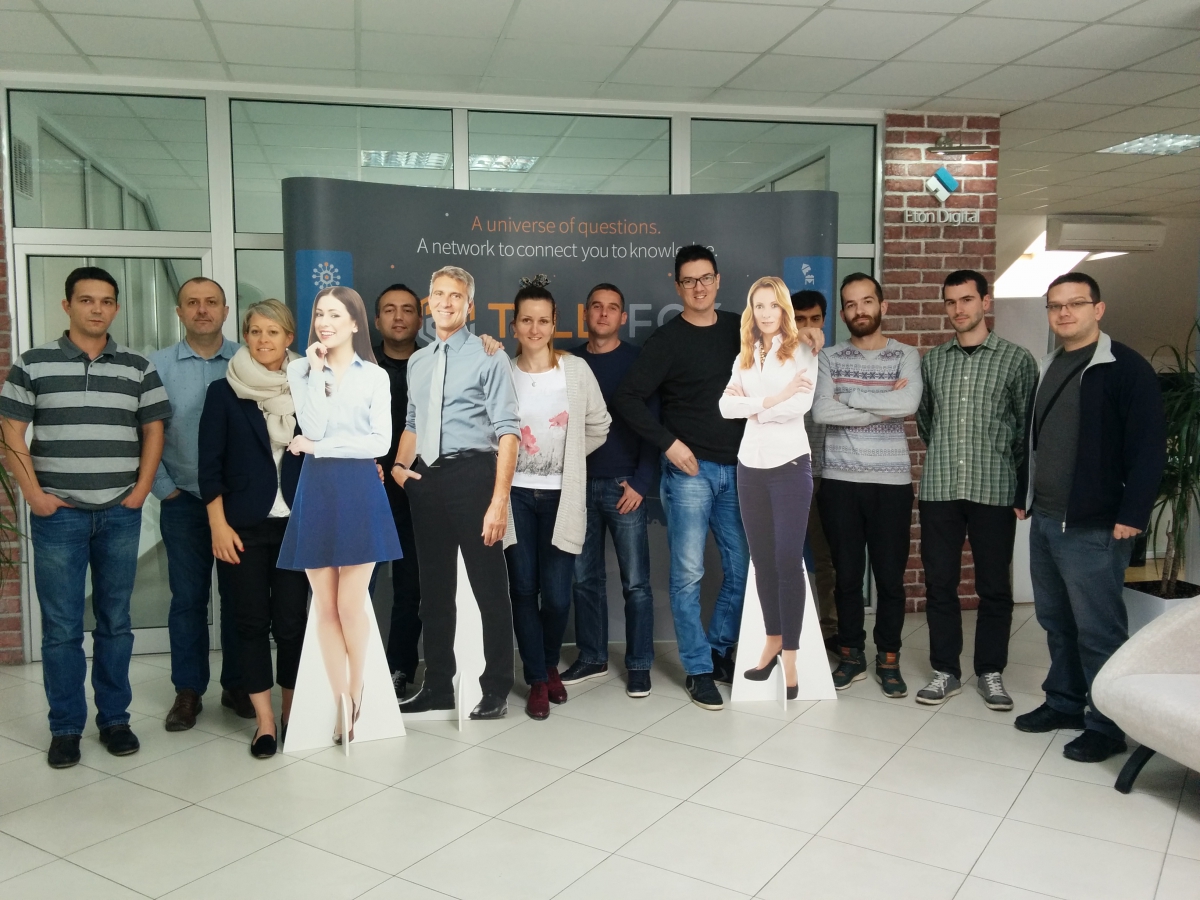Want To Step Up Your User Experience? You Need To Read This Interview First

There’s an interesting statistics in the WalkerInfo 2014 report: “Customers 2020, The Future of B2B Customer” which states that “by 2020, the customer experience will overtake price and product as the key brand differentiator.” Two years later, we can see it happening sooner. There are many articles about user experience on the internet; news, opinion articles, tutorials, but not many recent ones containing actual advice and describing processes, and rectifying this was the motivation behind this interview with Valérie Vuillerat.

A seasoned executive with a wealth of experience in competitive environments Valérie likes to challenge the way it has always been done. In her last job as the Managing Director of Ginetta Gmbh she led a team of 25 experts with highly diverse backgrounds creating one of the leading UX studios in Switzerland. She was in charge of strategy, business development, client acquisition, and commercial operations.
Her academic laurels include a masters degree in Human Computer Interaction Design with an Excellence Award for an outstanding thesis. Her entrepreneurial career started back in the 1990ies. Since then she cofounded a number of digital services (& product) ventures. Her hands-on technical expertise ranges from film production, multimedia production, designing beautiful user experiences, creating digital marketing campaigns to writing code.
She is actively engaged in promoting the benefits of having prosecco next to beer in the corporate fridge to better suit the needs of mixed teams. She is a regular public speaker at conferences on topics like women in tech, user experience design and the digital world.
We started right away with an essential question:
“What are the most important steps to take in order to design a great user experience?”.
Valérie: It all starts with the «strategy» phase and identifying the requirements. On one side we have the business objectives, and on the other side, we have user needs. The user’s needs are very important. A good user experience designer should take both into consideration to create the concept design.
The better we identify and understand the mental model of the user; how he thinks and how he sees things, the easier it is for us designers to create a design concept which matches this mental model. The stronger this match is, the easier it will be for the user to use the app, platform or a website because it will feel effortless and intuitive.
Following the approach of JJ. Garett 5S Model “The Structure” is the second phase of the project. In this phase the functional specs and the content requirements are defined.Once the content and the functions are set, we have to put them in an order resp. Prioritize them. It’s called the «structure». It is very important to design flows and information architectures to be very similar to the user’s needs and their expectations of the whole process. This step doesn’t have much in common with the visual design itself, but it is essential to the process.
The fourth step is named “The Skeleton”. During this step, we are deciding on how to show the content and how to design a user flow. Only when we complete this step do we do a full visual design, focusing on the colours, fonts and images in order to create a certain mood.
How important is the psychology of the user? How far do you go in understanding the user?
Valérie: We try to understand them as much as we can. The most important thing we need to know about the user are not the demographics, it’s the characteristics. This means that besides knowing where they come from, where they live etc., we need to know what their skill sets are, what their education level is, what the motivation to use the product is, what the tasks which they want to fulfill are, what their strengths and weaknesses are and even what they are afraid of (always in relations to the app/website/platform we are building). It’s very important to find out the answers to these questions in order to deliver a great user experience.

We met during your work on the TallyFox Tallium platform, where your expertise was paramount to our user experience. To provide an example of the steps you outlined above, could you present the process you followed with Tallium?
Valérie: The process is, obviously, very similar to what we explained above in regards to building a great user experience. Our first workshop consisted of collecting the business requirements with the TallyFox team in order to identify the business needs.
This helped us develop the first iterations of user personas by answering these questions:
- What is the motivation of the platform’s users to use TalllyFox Tallium?
- Which tasks does the user need to fulfil?
- What are the reasons to use it, and
- What were the user’s weaknesses and strengths?
These questions helped us create a hypothesis which was the first step of the part in which we identified the user personas.
What we needed to do next was to verify this hypothesis by interviewing the real users of the TallyFox Tallium platform to see if we were right in our assumptions. The interviews helped us to find out more about the users and we added these new insights to the user personas’ descriptions.
After completing this step, we created some use cases and scenarios:
We needed to know in which situations our user persona would use TallyFox Tallium and in which situations they do use it, and to put into words what we can do to improve those use cases. These written scenarios were translated into a flow, skeleton and a prototype.
The prototype was a hypothesis which needed to be verified with user tests. We conducted those tests with four different users from our target user group, not just anyone. It was very interesting to get their feedback, and with this feedback, we were able to improve the prototype, which resulted in a great user experience.
Does a good user experience need to be similar to what the users are already using and are acquainted with, i.e. drag and drop etc.?
Valérie: It’s always good to take interaction patterns the user is already familiar with, but if we always used what they know, would user experience be where it is now? Technology development has enabled us to do different things today compared to five years ago, or three years ago.
The important thing here would be to adapt patterns from real life or patterns from the digital life, similar to something the user already knows, and if it is all clear in design, the user will be able to adopt a new behaviour. It is very important to have a good mix of what the user already recognises and is familiar with its usage, and the new. Social Media networks such as Facebook and Twitter are improving usability and user experience all the time, but in small steps, so that the user can learn new patterns and adopt a new behaviour.
There are many ways to get the feedback from the users, apart from mostly used online surveys, what would you advise as an additional way to gather information from your users?
Valérie: There are different methods to apply here, and it all depends on which stage of the process you are in and what you exactly want to know. In the research phase, if you don’t know your users very well, it is important to observe your user, to ask for their opinion with questionnaires, or learn more about them by using the diary method a method where the user describes their experience outlining both good and bad things.
In the other phases, when you are doing the information architecture, the most common method is the card sorting method when you let your users from the target group sort the information you want to put on your app, website or a platform. You can also do cognitive walkthroughs, usability walkthroughs or usability tests, depending on the stage of the process you are in.
Can you tell us more about the cognitive walkthroughs?
Valérie: A cognitive walkthrough is when a usability specialist goes cognitively through a flow, it’s very similar to an expert review.
As a usability expert you possess a lot of experience, and you know which pattern works and which doesn’t. The expert needs to think as the user, of course, and needs to know the user: how old is he, where does he live, what are his strengths and weaknesses and all the questions mentioned above. Then the expert “enters” the user’s mindset and goes through the whole flow to review the other designers’ work.
What about a usability walkthrough? What is its difference from a usability test?
Valérie: A usability walkthrough is when you invite your target user and you go through the whole flow together. The difference between a usability walkthrough and the usability test is that for the test you give your user the tasks to complete by themselves, and you just observe it. Usability tests are more task driven while usability walkthroughs are more questions than tasks because you go through the process together and you are the one who asks the questions.
Where do you think the industry is? Do you think software companies care about the user experience, or do they just create the functionalities and say “Here you go”?
Valérie: I will take Facebook and Google+ as examples here. They invest a lot in user experience and this is one of the reasons they are so successful. Even though Facebook became complex in recent years it is still very easy to use. I believe they employ hundreds of designers to test and improve the user experience.
There will always be people who embrace changes and the ones who don’t. How do you handle their feedback?
Valérie: There is a change aversion, in both real life and online . It ’s i n our nature to like and feel comfortable when things are the same. comfortable when things are the same. Human beings are creatures of habit and you will never be able to design a product which would be universally liked. The most important thing is that your target group likes it, and even in your target group, there will be 90% of people who will like it and 10% who won’t, and that’s OK.
Liking something is a subjective feeling, and we need to learn to extract what we need from both client and user feedback, because feedback is always positive as it leads you to better results if you process and implement it correctly.
Is there a difference between a designer and a user experience expert?
Valérie: When you are developing an online product, you need to hire a user experience designer, and every designer who calls himself a user experience designer should also be a usability specialist as one comes with the other. If a designer does not know the approach or the steps needed to design a great user experience, then something is wrong.
User experience is not only the design, it is understanding the user, creating and defining the right concepts, but it needs to be in sync with the development. Great development is also important for great user experience because, if the design is really awesome but the developers are not able to deliver a smooth, fast loading and functioning performance, then the user experience is bad. The user experience is not a standalone discipline related to doing something nice with colours, typography, and images. It’s much more than that, concluded Valérie.
We at TallyFox agree, and this is precisely why we invested and continue to do so, in developing a great user experience all the time, and why we wanted to share this with you. Please leave your feedback in the comments.

Comments
Leave a comment